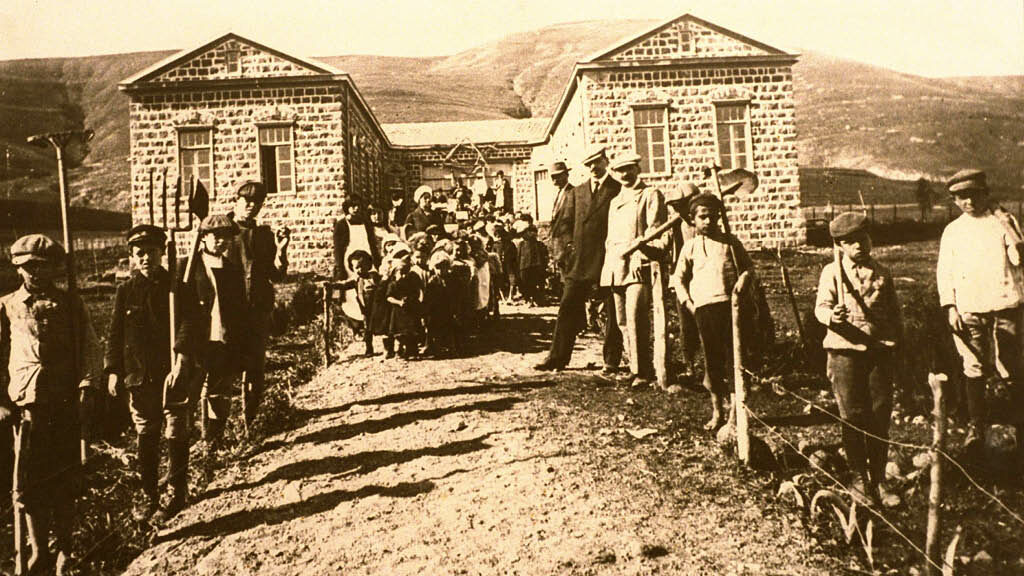Afghan Treasure
A few weeks before Rosh Hashanah sometime in the 11th century, a distraught, young Jewish Afghan young man named Yair sent a painful letter to his brother-in-law, Abu-al-Hasan Siman Tov. Life had dealt Yair a tough hand, or maybe it was just his own bad choices. Having failed in business in his hometown of Bamiyan, rumors were now spreading that he had “broken promises . . . regarding property” and that he did not truly “observe the Sabbath.” Leaving these problems behind him, he had left his young wife to move some 150 miles to Ghazni and begin anew.
But even there he struggled to make a living. More importantly, he missed his family. “Anyone who marries a woman brings peace to his own mind, as it is for all people, not so that I will be sitting in Ghazni and she in Bamiyan.” But, with business doing so poorly, Yair could barely make ends meet on a day-to-day basis, let alone afford the costs of travel.
In the same letter, he also addressed the patriarch of the family, Abu Nasr ben Daniel, to beg for his instruction and advice. What should he do? How could he afford to return home and reunite with his wife and family? Would he ever succeed in rebuilding his damaged reputation? Could he reconcile with the people he had hurt and who had hurt him? Deferentially referring to Abu Nasr in the third person and with an honorific title, Yair explained that, “Whatever he sees fit, I will be obedient . . . I will do what the Khwaja [Master] orders.”
We do not know how his family responded or whether Yair was ever reunited with his wife and family. But thanks to nearly 300 pages of documents acquired by the National Library of Israel (NLI) over the past few years, we have a real and, at times, intensely personal look into Jewish and Muslim communities that flourished along the Silk Road some one thousand years ago, before the forces of Genghis Khan swept through the area, fighting their way westward, in the early 13th century. A favorite nephew of Genghis Khan was killed in battle in the town of Bamiyan, so he upped the ante on his already brutal practice of laying waste to everything his forces conquered. Attempts to understand almost anything about Jewish life in these areas have been stymied by lack of materials, until now.
How these 1,000-year-old pages resurfaced remains mysterious, but rumors about them have circulated for some three decades. In the past 10 or 12 years, several collections appeared in Europe and were offered to private collectors and public institutions at exorbitant, frankly preposterous prices. But there was not much of a market for these materials among private collectors, who tend to prefer the stunningly illuminated manuscripts of the Middle Ages and early modern period, or the more easily accessible first printed editions of otherwise-known texts. In 2013, the National Library of Israel was able to acquire 29 leaves held by Lenny Wolfe, an important antiquities dealer in Jerusalem. In 2016, NLI was able to purchase another collection of over 250 leaves from Wolfe with the help of the Davidson and Salomon foundations.
It is in some ways an unprecedented collection. We knew that there were Jewish communities in the area, often referred to as Khorasan, but we knew almost nothing about them. Their existence is attested to by only the flimsiest of evidence—passing references to Jews in works or letters by both Jews or Gentiles from other places, medieval Jewish names that reflect family origins in that part of the world, and even a few gravestones. But that’s it. As one reads through these richly detailed papers, a largely unknown world slowly comes to light.
The many highly personal letters in this collection are written in Judeo-Persian (Persian language in Hebrew characters) on clean, beige, thick paper; evidence, including but not limited to carbon dating, points to the 11th century. But there are several other kinds of documents too, which can broadly be divided into two groups. The first stems from the personal and business archive of the family patriarch Abu Nasr ben Daniel, to whom the distraught Yair had written. Abu Nasr was a well-to-do Jewish merchant and landowner. The documents in this archive are written in Hebrew, Aramaic, Judeo-Persian, and even regular Persian, and it may be the only family archive preserved in Persian lands prior to the Mongol invasion. The second set of documents is a collection of Muslim legal, financial, administrative, and even literary papers, primarily from the 12th and early 13th centuries, mostly in Persian.

Hebrew or Aramaic liturgical and religious texts are in many ways the most exciting documents to come upon. Thus, one finds two pages of a prayer book for the Sabbath that are easily legible to any reader of modern Hebrew, despite being nearly one thousand years old. With minor changes, they are identical to the prayers recited by traditional Jews today. Another two pages from the Mishnah, tractate Avoda Zara, suggest that Jewish communities in the eastern part of historical Iran might have been closer to the talmudic and rabbinic tradition than anyone previously imagined, since scholars had often assumed that these traditions had not quite made it this far east. Fragments of a legal commentary on the prohibited foods listed in the book of Leviticus, which have yet to be transcribed or analyzed, could shed light on both how these Jews interpreted the Bible and how they kept kosher.
In addition, there are many pages of Jewish financial documents and business letters, some of which also contain personal information. The most intriguing of these are contained in two notebook fragments, scattered with notes and comments in Judeo-Persian (perhaps they are even parts of the same notebook that were separated from one another at some point). Although these too have not been transcribed or studied in detail, they are clearly the ledger and inventory of a Jewish merchant and landowner, with a running account of his goods, sales, debts, and purchases. One page, for example, contains the revenue of the month of Marcheshvan in the year 1337 of the Seleucid Era (1025/1026 C.E.), listing the parcels of land owned by the family patriarch, Abu Nasr, along with the amounts of produce they yielded
The Abu Nasr collection also contains Islamic legal documents that may be the earliest such materials in the Persian language to have survived to the present day. Most of these documents concern debts in grain or in currency owed to Abu Nasr. Short notes written in Judeo-Persian on the back of them summarize the details of the legal transactions, suggesting that Jews of this region made use of Islamic law when they were conducting commercial and financial transactions. Such documents may sound dry, but they have potential to show us how 11th-century Afghan Jews and Muslims did business together and what their everyday life was like: how they bargained, what they bought, and what they ate.
The slightly later Muslim legal, administrative, and literary material will shed light on different questions. Persian culture predates the rise of Islam in the 7th century, but Islam exerted a vast influence over Persian culture in everything from the writing of Persian in Arabic script to cultural and religious practices. Linguists are fascinated by this early evidence of the Persian language, and students of literary culture are eager to compare the Arabic and Persian poetry in these collections to those of later periods.
Might these documents from the 12th and 13th centuries amount to the archive of a court, tax authority, or administrative body? If so, how did these institutions function, what kind of paperwork did they keep, and how did merchants, businessmen, and householders interact with the law and the medieval bureaucrats commanded to uphold it? Did these things change as the society and culture reconstructed themselves after the Mongol invasion?
It’s not every day that a trove of documents like this appears. These documents—and more of them may yet turn up—are the raw materials for a revolution in our understanding of medieval Jews on the Silk Road.
Comments
You must log in to comment Log In
Suggested Reading

Yiddish Heroism, Hebrew Tears
For Avraham Sutzkever, life and work were not even slightly separate, since his was a life not merely shaped by poetry in a metaphorical sense but literally saved by it, when a poem of his produced an airplane.

Lovers (and Haters) of Zion
A new history of Zionism tells the tale through the towering emotions of its proponents and adversaries.
The Martyr of Reason
On Saturday evening, December 31, 1785, the eminent Enlightenment philosopher Moses Mendelssohn left his house to deliver a manuscript. He had finished it on Friday afternoon but, as an observant Jew, Mendelssohn waited until the Sabbath concluded to bring it to his publisher. He died a few days later on January 4, 1786, at the age of 56.
It’s Complicated
Isaiah Berlin's influential liberalism is partly explained by his Zionism.
lerner365
Excellent article, but please note: "Afghani" is the CURRENCY of Afghanistan--it is not the adjective for someone/something from Afghanistan. The Treasure (and indeed it is) is "Afghan".